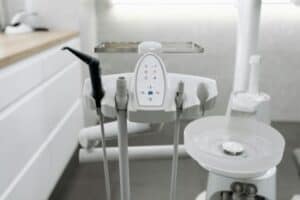
27 Jul How to Identify Red Flags When Buying a Dental Practice
How to Identify Red Flags When Buying a Dental Practice: Expert Tips + 12 Crucial Warnings
Buying a dental practice is one of the most exciting—and expensive—decisions you’ll make in your career. But it’s easy to fall for a deal that looks great on paper yet hides dangerous pitfalls. If you’re not cautious, those hidden issues can lead to serious financial loss, legal troubles, and reputation damage.
This guide will help you confidently spot the warning signs when evaluating a dental practice. Let’s dig into the 12 most common red flags and how to handle them.
Understanding the Dental Practice Market
The dental industry has evolved significantly over the past decade. Today, private practices face pressure from corporate dental groups, shifting patient expectations, and changes in insurance.
Key market insights:
-
Consolidation is increasing. DSOs (Dental Service Organizations) are buying up solo practices at rapid rates.
-
Valuations are rising. The average practice sells for 60-80% of annual collections—but not all valuations are justified.
-
Demand is strong, but competition is stronger. The barrier to entry is high, which makes due diligence even more critical.
Knowing the market context helps you separate a great opportunity from a risky one.
Why Red Flags Matter
A red flag doesn’t always mean “walk away,” but it does mean ask more questions. Here’s why these warnings are so important:
-
Financial safety: You’re investing hundreds of thousands—sometimes millions—of dollars.
-
Legal security: You could inherit regulatory violations or lawsuits.
-
Operational readiness: A failing practice can drain your resources instead of producing revenue.
-
Reputation risk: If patients or staff are unhappy, you’ll struggle to recover the goodwill.
Being aware of these risks lets you negotiate better, prepare smarter, and walk away when needed.

Red Flag #1: Declining Patient Base
A shrinking patient list is a top indicator that something’s wrong.
Key signs:
-
New patient numbers are dropping each month.
-
Recall appointments are not being scheduled.
-
The patient demographics don’t match future growth potential.
What to do:
Ask for 3 years of patient flow reports and recall metrics. Use demographic tools (like ESRI) to examine local trends.
Red Flag #2: Poor Financial Records
Would you buy a car without seeing the engine? Then don’t buy a practice without financial transparency.
Watch for:
-
Missing profit & loss statements
-
Disorganized tax returns
-
Big fluctuations in revenue without explanation
What to do:
Hire a dental CPA to review the books. Inconsistencies may signal embezzlement, fraud, or poor management.
Red Flag #3: Outdated Equipment and Technology
Patients expect modern tools—and so should you.
Equipment issues:
-
Outdated X-ray machines
-
No digital systems (charting, imaging, billing)
-
Costly repairs coming soon
What to do:
Request a full equipment inventory and maintenance history. Budget for upgrades during negotiations.
Red Flag #4: High Staff Turnover
Employees are the heart of a dental practice. If they’re leaving regularly, it’s a serious red flag.
Possible causes:
-
Toxic work culture
-
Poor compensation or leadership
-
Owner micromanagement
What to do:
Speak with current staff if allowed. Check Glassdoor or online forums for anonymous reviews.
Red Flag #5: Negative Online Reputation
In today’s world, online reviews are the first impression.
Key signs:
-
Low star ratings on Google or Yelp
-
Repeated complaints about the same issue
-
No responses from the owner to reviews
What to do:
Run a sentiment analysis using tools like Podium or Birdeye. Ask the seller for plans to improve reputation.
Red Flag #6: Non-Compliance with Regulations
Non-compliance could cost you big—even jail time in extreme cases.
Watch for:
-
Lack of OSHA or HIPAA documentation
-
No written policies for infection control
-
Unlicensed assistants performing procedures
What to do:
Hire a dental practice consultant to audit compliance before closing the deal.
Red Flag #7: Overreliance on One Insurance Provider
If 80% of the practice revenue comes from one insurer, any change in coverage could tank your income.
What to do:
Request payer mix reports and analyze the dependency. A balanced portfolio of PPOs, fee-for-service, and Medicaid (if applicable) is best.
Red Flag #8: Poor Location and Visibility
Location isn’t everything—but it sure counts.
Warning signs:
-
Hidden in a strip mall with low foot traffic
-
No signage or curb appeal
-
Limited parking or poor access for elderly/disabled
What to do:
Visit during peak hours. Ask local real estate agents about traffic patterns and growth forecasts.
Red Flag #9: Excessive Owner Involvement
If the owner is the practice, it might collapse without them.
Common signs:
-
Owner performs all major procedures
-
Staff overly reliant on owner decisions
-
Patients loyal to the individual, not the brand
What to do:
Ask about delegation, existing team autonomy, and how many procedures can be transitioned.

Red Flag #10: Unclear Transition Plan
Smooth transitions retain patients and staff. Poorly planned ones don’t.
What to do:
Discuss the owner’s exit plan, staff contract retention, and patient communications. Get it in writing.
Red Flag #11: Legal Issues or Pending Lawsuits
Lawsuits = liabilities you don’t want.
What to do:
Request legal disclosures. Consult a dental attorney to review contracts, leases, and any pending or prior claims.
Red Flag #12: Unrealistic Valuation
Some sellers inflate their practice’s value with projections, not facts.
Red flags:
-
EBITDA doesn’t align with tax returns
-
Multiples don’t match the local market
-
No third-party appraisal
What to do:
Always get an independent valuation from a dental practice broker or appraiser.
FAQs About Buying a Dental Practice
1. How long does the buying process take?
Typically, buying a dental practice takes around 3 to 6 months from initial interest to closing. The timeline can vary based on factors like how quickly financing is approved, the complexity of due diligence, and how responsive both parties are during negotiations. Engaging experienced professionals like brokers, attorneys, and lenders can help speed up the process while ensuring everything is done thoroughly.
2. Should I hire a broker or go direct to seller?
Hiring a broker can be a smart move, especially if you’re new to dental acquisitions. Brokers help with valuations, identify red flags early, and often have access to off-market opportunities. However, going directly to the seller might save on commission fees and allow for more flexible negotiation—though it also requires you to do more of the due diligence yourself.
3. What’s the average dental practice profit margin?
Most dental practices operate with a profit margin between 30% to 40% after paying for overhead, salaries, and operational expenses. This can vary depending on location, specialty, insurance mix, and management efficiency. Practices that are fee-for-service or have optimized workflows may achieve higher margins compared to those that rely heavily on PPOs or Medicaid.
4. Is it better to buy or start a practice from scratch?
Buying an existing dental practice gives you immediate access to cash flow, patients, staff, and equipment, making it less risky for many first-time buyers. On the other hand, starting from scratch allows you full control over branding, systems, and team selection but requires more time and capital to reach profitability. The best choice depends on your financial situation, risk tolerance, and long-term goals.
5. Can I finance 100% of the purchase?
Yes, many banks and dental-specific lenders offer 100% financing for qualified buyers, especially if the practice has strong financials and a solid patient base. These loans often include working capital for improvements or upgrades as well. Lenders typically require a good credit score, a business plan, and relevant experience in dentistry or practice management.
6. What happens if patients leave after the sale?
It’s common to lose a small percentage of patients after a practice changes ownership, particularly if the transition isn’t handled well. That’s why a thoughtful transition plan—including seller introductions, consistent care, and clear communication—is crucial to retaining patients. Buyers should also consider including patient retention clauses in the purchase agreement for added protection.
Conclusion
Buying a dental practice is a major investment—but with the right knowledge, you can avoid costly red flags. Each warning sign in this guide is an opportunity to dig deeper, negotiate smarter, or walk away with confidence.


Sorry, the comment form is closed at this time.